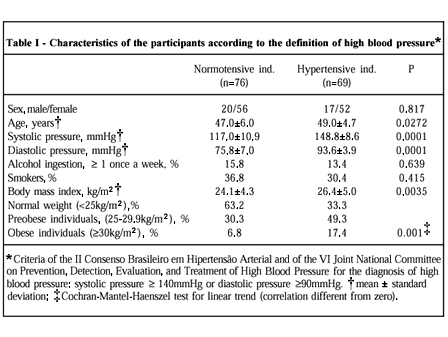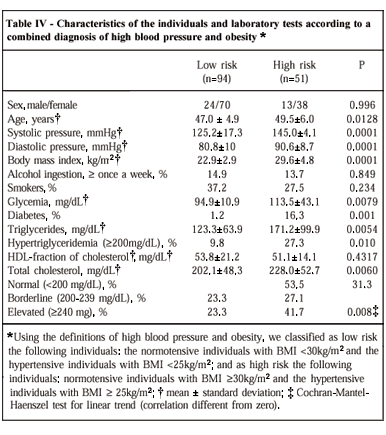OBJECTIVE: To determine if abnormal laboratory findings are more common in individuals with hypertension and in those with other risk factors, such as obesity, smoking and alcohol ingestion. METHODS: A study was carried out in the general outpatient clinics of a university hospital (145 individuals without previous diagnosis of hypertension) and the following variables were assessed: high blood pressure (as defined by the VI Joint National Committee on Prevention, Detection and Treatment of High Blood Pressure - VI JNC), obesity [calculated using body mass index (BMI)], tobacco use, and alcoholic ingestion. The laboratory examinations consisted of the following tests: hemogram, glycemia, uric acid, potassium, total/HDL-fraction cholesterol, triglycerides, calcium and creatinine. RESULTS: High blood pressure was not associated with a higher number of abnormal laboratory tests. Hypertensive individuals with a BMI > or = 25kg/m² or normotensive obese individuals, however, had a higher frequency of diabetes (12X), hypertriglyceridemia (3X), and hypercholesterolemia (2X), as compared with hypertensive individuals with BMI <25kg/m² and preobese/normal weight normotensive individuals. CONCLUSION: High blood pressure is not associated with a higher frequency of abnormal laboratory tests. The association of high blood pressure and obesity, however, increases the detection of diabetes and dyslipidemias.
laboratory examinations; high blood pressure; obesity; screening




